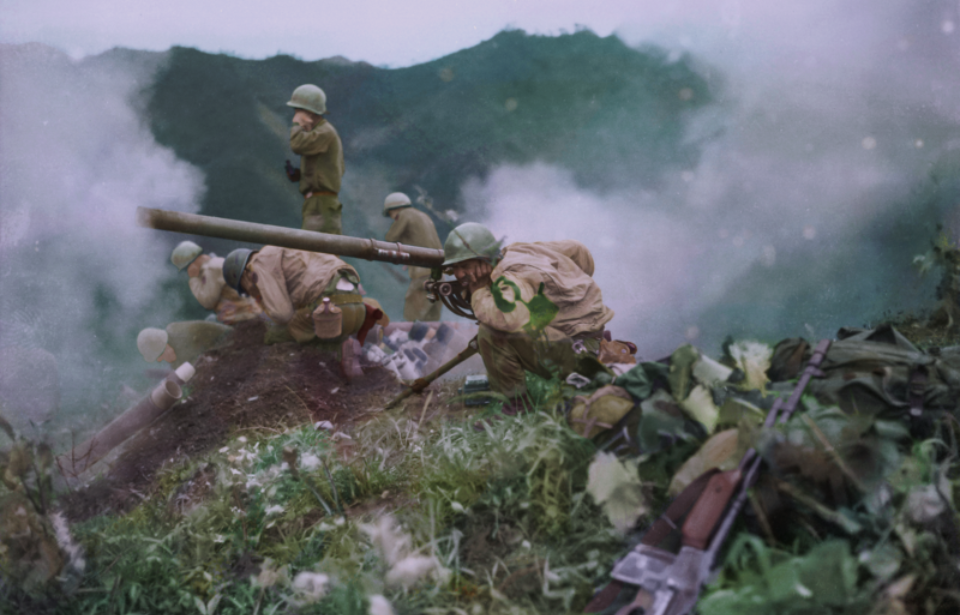The M20 recoilless rifle saw limited service toward the end of World War II and was extensively utilized in Korea. It had a limited capability to penetrate armor, effective only against armor that was up to 100 mm thick, rendering it ineffective against tanks like the Soviet T-34. However, it proved efficient as an infantry support weapon against lightly-armored vehicles and enemy pillboxes.
Development of a new recoilless rifle
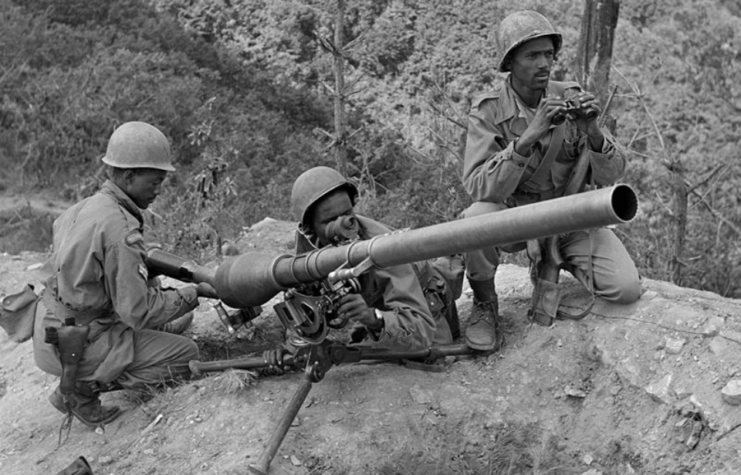
During the Second World War, the US Army recognized the need for a lightweight weapon that could be operated by advancing infantry while still possessing ample firepower against enemy armor. As such, in 1944, the Small Arms Division of the Ordnance Department initiated the development of a recoilless rifle, which would later evolve into the M20.
Prior to this, the United States had already crafted smaller recoilless rifles, like the M18, and experimentation had commenced on a 75 mm version. Upon the successful conclusion of trials, production of the M20 began in March 1945.
M20 Recoilless Rifle specs.
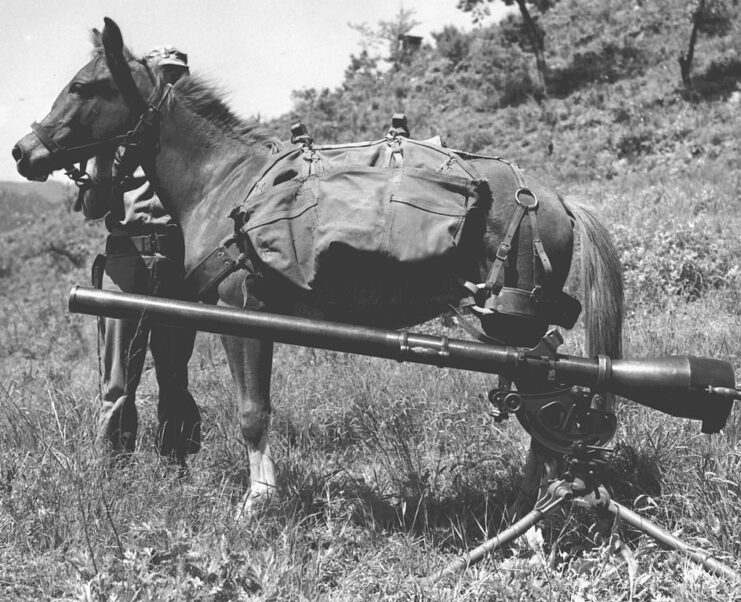
The M20 Recoilless Rifle weighed between 103 and 114.5 pounds, with a length of nearly seven feet. Despite these specifications, it was designed as a portable weapon for infantry units. The overall concept was simple. The rifled barrel had the outward appearance of a tube, and, toward the rear, it tapered outward to an enlarged exhaust section.
The M20 used perforated artillery shell casings, which worked in conjunction with the exhaust part to allow propellant gasses to escape. This eliminated the recoil system, which, in turn, reduced the rifle’s weight, making it more effective for infantry use.
The M20 was always manned by two soldiers

Using a conventional breech-loading system, the M20 could fire a range of 75 mm rounds: High-Explosive Anti-Tank (HEAT), High-Explosive (HE), High-Explosive Plastic/Plasticized (HEP) and White Phosphorous (WP). It had a muzzle velocity of 1,000 feet per second, allowing for a maximum firing range of 3.9 miles.
The M20 could be operated by a single soldier, if necessary, but was almost always manned by two – a gunner and a loader – who would move the rifle using carrying handles on either side of the barrel. Unlike smaller recoilless rifles, it wouldn’t be held by the operator when in use, with the M1917A1 tripod being utilized. Both could be fixed to a Jeep, allowing for greater mobility.
Korean War
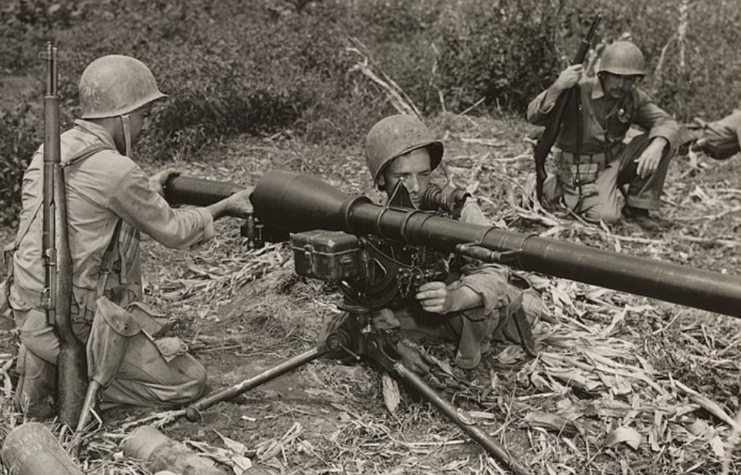
The M20 Recoilless Rifle saw limited service during the final months of World War II, in both the European and Pacific Theaters. That being said, it, along with the Bazooka, were the two main American anti-tank weapons in Korea.
Almost immediately, the weapon showed its shortcomings. During the Battle of Osan, the M20 failed to destroy any T-34 tanks operated by the North Koreans. Following the deployment of the M20 Super Bazooka, the rifle was no longer used as an anti-tank weapon and, instead, served as infantry support. It flourished in this role, destroying enemy trenches, pillboxes and bunkers.
Phasing out the M20 Recoilless Rifle

Between Korea and the Vietnam War, the M20 was phased out of service, with the US military developing wire-guided missile systems. With the introduction of the BGM-71 TOW in 1970, the rifle was fully retired from service with the US. Until the 1990s, the country still had a large stockpile of M20 ammunition, and, in an effort to use it up, the weapons were deployed by the US National Park Service (NPS) and National Forest Service to start controlled avalanches.
Several countries equipped the M20 Recoilless Rifle
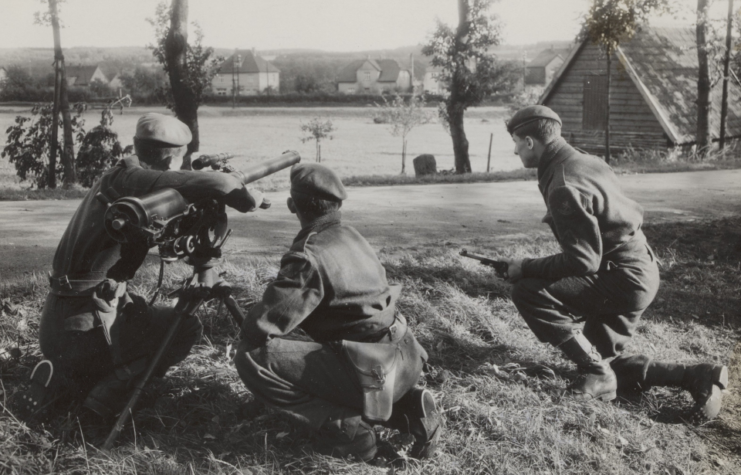
The first non-American combat use of the M20 Recoilless Rifle was by the French during the First Indochina War. In addition to France, other NATO and American allies purchased the weapon, including the Netherlands, South Korea, Argentina, Colombia, the Philippines, South Vietnam and Saudi Arabia. The most recent deployment of the M20 was by the Royal Moroccan Army during the Western Sahara War, between 1975-91.
Want War History Online‘s content sent directly to your inbox? Sign up for our newsletter here!
China produced unlicensed copies of the M20, known as the Type 52 and 56. The Type 52 was an exact copy, while the 56 allowed for the rifle to fire fin-stabilized HEAT rounds. The former was equipped by 10 nations, while the latter was used by six. These copies were used, most notably, by the North Vietnamese Army (NVA) and Viet Cong during the Vietnam War.
